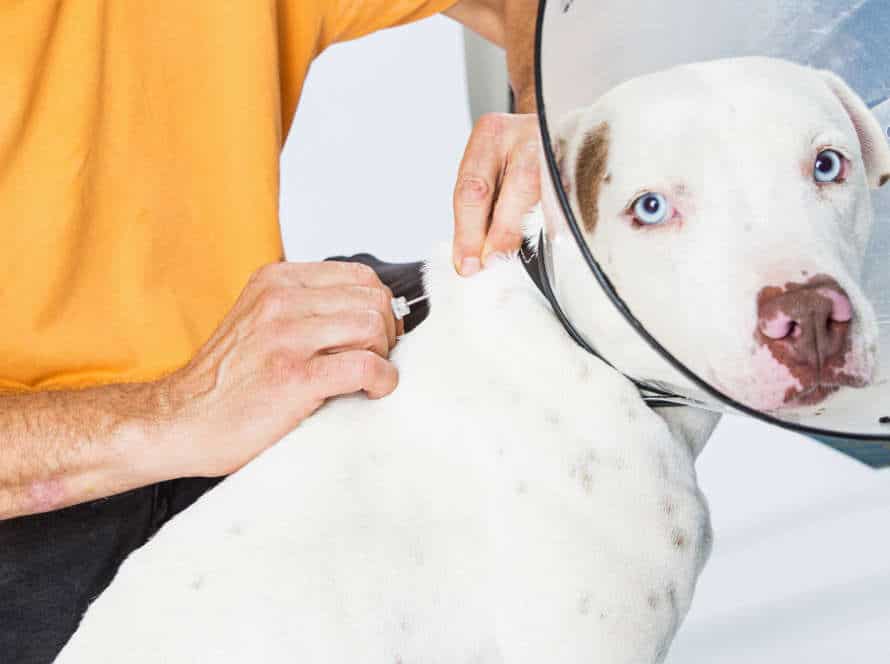The Behavioral Benefits of Spaying and Neutering
Spaying and neutering can be beneficial for cats and dogs! Here’s how:
- Aggression reduced – Neutering can lead to fewer hormones and less territorial behaviour.
- Marking down – Unneutered males may urine mark, but spaying/neutering can help stop it.
- Calmness up – Unspayed females can be temperamental during their heat cycle, but spay surgery balances hormones and creates a more stable mood.
- Roaming reduced – Unneutered males have strong urges to look for mates, but neutering cuts the desire to wander from home.
Consider spaying and neutering pets for their health and to prevent overpopulation.
Reduction in Aggression
Spaying and neutering your pet can have lots of advantages. One of them is a drop in aggression. Unneutered males can be more territorial and aggressive, specially during the mating season. Neutering can stop this behaviour and even lower the chances of prostate health issues and certain types of cancer. Let’s look deeper into how spaying and neutering can lower aggression in pets.
Causes of aggression in unaltered dogs
Not spaying or neutering your dog can cause aggression and bad behavior. Here are some reasons why:
- Territorialism – Intact dogs are more aggressive to same-gender dogs entering their space.
- Hormone imbalances – Intact males have high testosterone, which can cause aggression, especially around females in heat.
- Defending resources – Unaltered dogs can get aggressive if they think someone is taking their stuff.
- Roaming behavior – Unneutered males roam more, meaning they’re more likely to get into fights.
Spaying or neutering your dog can help. It cuts down on hormones and territorial behavior. It also brings benefits like less marking, howling, and aggression towards other dogs.
Studies on altered dog behavior
Studies show spaying/neutering can curb aggressive behavior in pets. Here’s how:
- Neutered males are less likely to show aggression toward other dogs, reducing fights and injuries.
- Unspayed females can be protective of their litter and show aggression towards humans. Spaying can reduce this.
- Territorial aggression from both genders can be lowered with neutering.
However, spaying/neutering is not a full-proof solution. Pet owners should seek professional help if their pets exhibit excessive and problematic behavior.
Impact of spaying and neutering on aggressive behavior
Spaying and neutering pets can help with aggression. Here are some benefits:
- Reduced territorial marking. Pets will be less aggressive and easier to manage.
- Reduced roaming. Neutering males means they’re less likely to go searching for mates.
- Less aggression towards other animals. This helps when there are multiple pets in one household.
Remember, spaying and neutering won’t solve all issues, but it can be a great tool for reducing aggression.
Decreased Urine Marking
Spaying and neutering can help cut down on urine marking. This activity is common with unaltered animals. It’s because the process reduces testosterone. Testosterone is connected to this bad behavior. It’s great news for pet owners! Urine marking is a bother and can damage property.
Urine marking behavior in unaltered cats
Urine marking is a common behavior among unaltered cats. It’s when they leave small amounts of urine to mark their territory, announce their presence, or advertise that they’re looking for mates.
To decrease urine marking, you can spay or neuter your cat. This can reduce urine marking in both male and female cats. Plus, it has other benefits like less aggression and less roaming. It also provides health benefits, like a lower risk of reproductive cancers and infections.
Therefore, if you want a peaceful and healthy bond with your cat, spaying or neutering is a must!
Effect of neutering on urine marking
Neutering has the potential to greatly decrease urine marking in both cats and dogs. This is an instinctive behavior, but can be a nuisance.
Testosterone in males is a major cause of urine marking. Neutering eliminates or reduces this hormone, decreasing the likelihood of peeing habits.
The same goes for female pets. Spaying eliminates or reduces estrogen, another hormone which may induce urine marking.
Note that neutering isn’t a quick fix. The earlier you spay or neuter your pet, the more likely it is to prevent the behavior from forming.
Pro Tip: Neutering and spaying have many advantages. These include preventing unwanted litters, reducing the risk of certain diseases, and controlling behavioral issues like aggression and roaming. Speak to your vet to find out when the best time to neuter or spay your pet is.
How spaying helps decrease urine spraying in females
Spaying your female cat has major benefits. This includes reducing the chance of urine spraying in your home – even if it has already started.
The procedure involves taking away the ovaries and uterus, which gets rid of the hormones that cause spraying. Plus, it will make your cat more affectionate and less aggressive.
It’s important to spay your cat before urine spraying becomes a habit. This will improve her life and help keep your house clean and odor-free.
Pro tip: Talk to your vet to know when is the best time to spay and potential risks or complications.
Anxiety and Fear Reduction
Pets that get spayed or neutered may act differently. This can reduce their stress and fear. Unaltered pets can become frustrated because they can’t mate – leading to them being more aggressive or frustrated. But when they are spayed or neutered, these behaviors usually decrease. Other good behavioral changes can occur too – which can be helpful for both animals and owners!
Anxiety and fear-related behaviors in dogs and cats
Spaying and neutering can be great for reducing anxiety and fear-related behaviors in dogs and cats, resulting in a much happier pet! Here’s how:
- Aggression can be lowered by spaying and neutering, creating a more relaxed atmosphere.
- Anxiety is also decreased due to reduced hormones.
- Territorialism is lessened, meaning your pet won’t feel so stressed if their space or things are invaded.
All of this together can help create a longer and happier life for your furry friend!
Studies on altered dog and cat behavior
Spaying and neutering your pets can improve their behavior. Anxiety and fear can be reduced. Studies have been conducted to show this.
For example, the University of California, Davis found that neutering male dogs lessened aggression towards people and other dogs. Spaying female dogs cut down fear of noises and separation anxiety. The University of Minnesota found that neutering male cats reduced roaming and aggression towards people and other cats.
Overall, spaying and neutering bring numerous benefits. Calmer behavior, less aggression, and reduced anxiety are just some. Plus, it can help decrease the number of strays and prevent certain diseases.
Pro tip- Spay and neuter your pets for their health and happiness, and to reduce animal overpopulation.
Impact of spaying and neutering on reducing anxiety
Spaying and neutering can have amazing behavioral benefits for pets. Studies show unneutered male cats have more aggressive, anxious and territorial behaviors. Unspayed female dogs are prone to irritability and mood swings, which can be relieved by spaying. During mating season, pets may become anxious or fearful, leading to destructive and vocal behavior. Spaying and neutering can reduce these behaviors. It also decreases aggressive tendencies toward other animals, reduces roaming, fighting and illnesses. In conclusion, spaying and neutering your pet can make them happier, healthier and better behaved.
Roaming and Escaping
Cats and dogs that are spayed or neutered often have reduced urges to roam or escape. This can be beneficial for pet owners. It can decrease the number of animals in shelters and on the streets. Plus, it can also help with some behavioral issues.
Let’s explore the behavioral advantages of spaying and neutering your pet.
Causes of wandering behavior in unaltered pets
Pets are naturally inclined to roam and escape. But, this behavior can become more intense in unaltered pets. Here are the main causes:
- Sexual arousal – Unaltered pets may wander in search of potential mates.
- Territorial behavior – They may roam to protect their area from other animals.
- Curiosity – They may wander due to curiosity or boredom.
- Hunting instincts – Certain breeds of unaltered dogs may have a strong instinct to hunt other animals.
Spaying or neutering your pet can reduce their urge to roam. It also reduces sexual arousal and territorial behavior. Additionally, it can lessen aggression and anxiety, making them less likely to engage in destructive behaviors.
The impact of spaying and neutering on roaming behavior
Spaying and neutering can lessen roaming and escaping in pets. Studies show unneutered male dogs have a bigger chance to roam for mating. Unspayed females may try to go away for mating or dodge male attention. Neutered males and spayed females are less likely to roam, mark territory or be aggressive to other animals.
Apart from stopping unwanted actions, spaying and neutering can make pets healthier and live longer. This is why vets recommend it for safer pet lives.
Tips for preventing wandering behavior in altered pets
Stopping your altered pet from wandering is achievable with correct training and choosing the right environment. Here are some tips to make sure your pet stays close to home:
- Teach commands: Teaching your pet the basic commands like sit, stay, come and heel is essential. These commands help to control their roaming behavior.
- Keep them entertained: Provide them with fun toys, games and regular exercise. That will keep them busy and stop the urge to wander.
- Fence your yard: Build a secure fence around your garden or yard to stop them from wandering.
- Use leashes/harnesses: Keep your pet on a leash or harness when taking them for a walk.
- Neuter/spay your pets: Altered pets are less likely to roam and wander compared to unaltered ones.
By using correct techniques and managing the environment, you can avoid wandering behavior in your altered pet and keep them safe.
Conclusion – The Importance of Spaying and Neutering for Behavioral Health
To finish, spaying and neutering your pets is beneficial. It prevents overpopulation and can help with behavior. This includes reducing aggression in males, and decreasing the risk of bad behaviors and running away.
It also stops female pets from getting stressed during their heat cycles and displaying territorial behavior. Sterilization can also increase their life span and decrease the risk of disease.
It is important to spay and neuter your pets before they reach sexual maturity. Doing this will give them and you a happier, healthier life.
Frequently Asked Questions
Q: What are the behavioral benefits of spaying and neutering my pet?
A: Spaying and neutering your pet can reduce aggressive and territorial behavior, roaming, and spraying, which can lead to a calmer and more balanced temperament.
Q: Will spaying or neutering my pet change their personality?
A: No, spaying and neutering do not change a pet’s fundamental personality, but they can improve behavior by reducing hormone-driven behaviors.
Q: When is the best time to spay or neuter my pet?
A: The best time to spay or neuter your pet is typically around 6 months of age or before they reach sexual maturity to prevent unwanted behaviors and health issues.
Q: Can spaying or neutering my pet prevent health issues?
A: Spaying or neutering your pet can prevent certain health issues such as reproductive cancers, infections, and other illnesses that can affect pets’ quality of life.
Q: Can I still breed my pet if they have been spayed or neutered?
A: No, spaying or neutering your pet typically involves the removal of their reproductive organs, making it impossible for them to reproduce.
Q: Is spaying or neutering my pet a painful process?
A: No, spaying or neutering are common routine surgeries and are usually performed under general anesthesia, ensuring pets do not experience pain or discomfort during the procedure.







